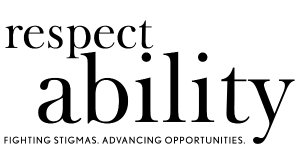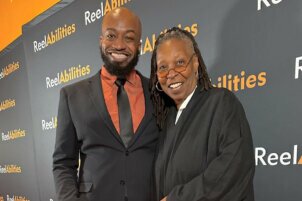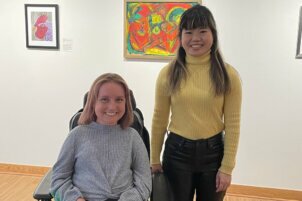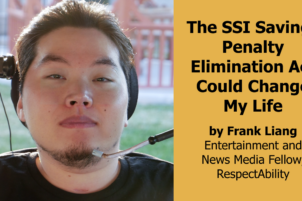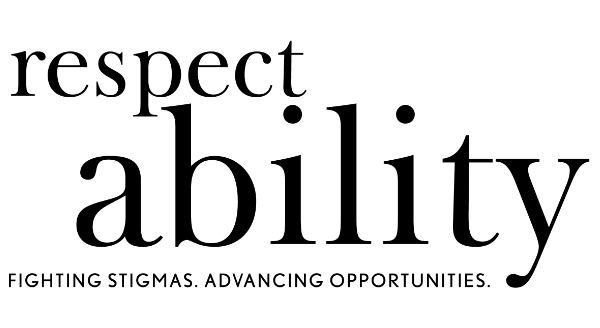Submitted testimony will help inform Congressional efforts to rebuild the economy and get workers with disabilities back to work.
Washington, D.C., April 7 – Recently, the United States Senate Health, Education, Labor, and Pensions (HELP) Committee invited subject matter experts, self-advocates, community members and their constituents to virtually provide ideas and insights about rebuilding the economy in a post-COVID world.
In response, the national disability inclusion organization RespectAbiltiy weighed in with their perspective on how to advance new opportunities for workers with disabilities and close crucial gaps in outcomes for people from marginalized communities.
“When it was passed with broad, bipartisan support in 2014, the Workforce Innovation and Opportunity Act (WIOA) invested unprecedented resources into efforts to get people with barriers to employment into the labor force,” said Jennifer Laszlo Mizrahi, President and CEO of RespectAbility. “Now, after the pandemic that has killed so many Americans and devastated our economy, it is time to implement policies that will drive a truly equitable recovery that helps people with disabilities and other marginalized communities get back to work.”
In their comments about WIOA and the path forward, RespectAbility’s team articulated a vision focused on closing gaps in outcomes, tracking metrics around disability/race, fighting stigmas that harm the employment aspirations of millions of Americans with disabilities, expanding Project SEARCH to help meet the needs of the caring economy and encouraging entrepreneurship.
RespectAbility’s full testimony is presented below:
April 6, 2021:
Re: Call for Comments – COVID Jobs Crisis, WIOA, and the Path Forward
Dear Chair Murray and Ranking Member Burr,
Thank you for much for the opportunity to offer our comments on how to improve policies under the Workforce Innovation and Opportunity Act as well as drive innovative approaches to apprenticeship through a lens of equity, intersectionality, and disability. Here are specific ideas:
Collect and track disability data and progress across government as well as disaggregate it by race: All too often, disability status is not a data point captured by existing government programs. For example, in collecting data on small business involved with the Paycheck Protection Program last year, while the Small Business Administration was able to collect data on minority status, it did not collect any disability data. Data collection on government contractors should include disability inclusion tracking. Further, given the disparities among Black and Indigenous People of Color (BIPOC) people with disabilities, it is critical to disaggregate data by race. Even adding a simple question such as this one could help create better understanding of the intersection of disability, race, and economic disparities in America today: Do you, a family member, or a close friend have a disability, such as a physical, mental health, sensory, learning, cognitive or other disability that impacts daily living? If yes, then please let me know which applies.
Building the Caring Economy through Proven Models of Disability Employment: In looking for ways to both provide quality care to older and disabled Americans and to get more workers with disabilities into the labor force, policymakers would do well to look at the Project SEARCH model. Project SEARCH is a proven transformational school-to-work transition program for youth with intellectual and developmental disabilities that prepares them for good paying careers in hospitals, elder-care and the caring economy. The SEARCH model is a win-win-win for the host employer, the workers with disabilities, and the many older Americans helped by Project SEARCH trained workers. As a model it has already been replicated in 47 states, with dozens of satisfied employers, and hundreds of workers with disabilities earning minimum wage or more. This model is perfectly suited to the challenges of the present and could be expanded widely.
Expand on the use of online, cohort-based apprenticeships for workers in the knowledge economy and the non-profit sector: The past year and the pandemic has made remote work an accepted reality for thousands of workers. This has been a “silver lining” of expanding and normalizing a common reasonable accommodation request long championed by workers with disabilities. Microsoft has dramatically expanded their accessibility features, including built-in speech to text technology which makes it possible for people with even the most limited mobility to use computers. This has opened an unprecedented window for people with disabilities to contribute to the success of nonprofits, communities and beyond. Remote work also has great promise at expanding apprenticeship programs into more diverse sectors of the American economy, especially the knowledge economy. RespectAbility has retooled our own National Leadership Program from being a cohort-based, Washington D.C.-located internship program into an all-virtual, work-from-anywhere skills-based training program. Such approaches have major implications for efforts to train workers for good paying jobs in the knowledge economy and the non-profit sector and should be widely expanded and replicated.
Reduce Gaps in Disparate Impacts and Prioritize Equity: In order to rebuild from the COVID-19 pandemic and pave the way for an equitable economic recovery, it is critical to recognize the losses experienced by workers with disabilities over the past year. The nation’s overall labor force participation rate dropped to 61.4 percent in March 2021. At the same time, the data shows that workers with disabilities have seen an even bigger drop in their labor force participation. According to the University of New Hampshire’s Institute on Disability (UNH-IOD), the labor force participation rate for working-age people with disabilities is currently only 33.4 percent. As the economy rebuilds and people get vaccinated, it will be critical to close the gap in labor-force participation rates for working-aged people with disabilities and their non-disabled peers.
Prioritize Closing Gaps in Labor Force Participation Rate Outcomes by Race and Disability: It is not good enough to simply track unemployment numbers as so many people with disabilities have been pushed out of the labor market. Moreover, metrics must also be tracked intersectionally by race and disability. Workers of color with disabilities faced very different outcomes in the labor force before COVID-19. According to Census Bureau data from 2019, only 32.1 percent of working-age African Americans with disabilities had jobs, compared to 40.9 percent of working-age Latinx people with disabilities and 43.1 percent of working-age Asian Americans with disabilities. Likewise, Black, Indigenous and People of Color (BIPOC) people with disabilities had significantly higher rates of poverty than other elements of the disability community. In 2019, 32 percent of African Americans with disabilities lived in poverty, as did 26 percent of Latinx people with disabilities, 17.9 percent of Asian Americans with disabilities and 17.1 of white people with disabilities. These disparities and inequities have only grown worse due to COVID-19.
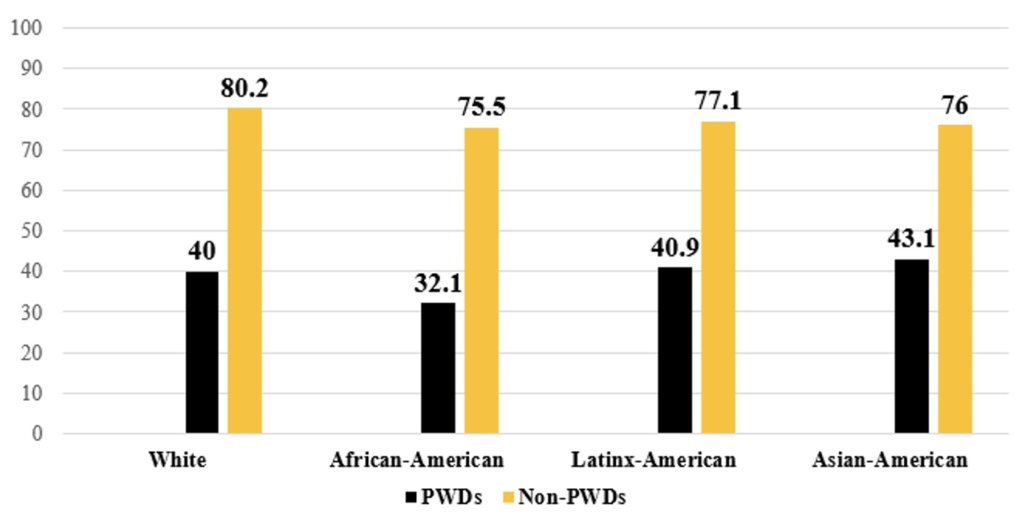
Figure 1: Employment Rates for Working-Age Americans w/ & w/o Disabilities, by Race – 2019 (Pre-COVID)
Source: 2020 Annual Disability Statistics Compendium
Implement Strategies to Close the Gap in High School Graduation Rates: Likewise, working to close gaps in high school graduation rates also needs to be a key priority in the years ahead. For example, in the class of 2018, only 66 percent of Black students with disabilities, 71 percent of Latinx students with disabilities, 77 percent of white students with disabilities, and 79 percent of Asian-American students with disabilities completed high school. By contrast, in the class of 2018, 89 percent of white students without disabilities graduate with a high school diploma, as did 79 percent of African American students without disabilities, 81 percent of Latinx students without disabilities, 92 percent of Asian-American students without disabilities. Even now, far too many students with disabilities leave the school system without a diploma. Numerous studies have demonstrated that graduates of college will earn far more than college students who dropped out. By far, those earning the least are students without a high school diploma. A lack of a high school diploma is the negative ‘gift’ that keeps on hurting. As such, legislators have a moral imperative to invest in and expand services that will support the educational and employment success of more students with disabilities.
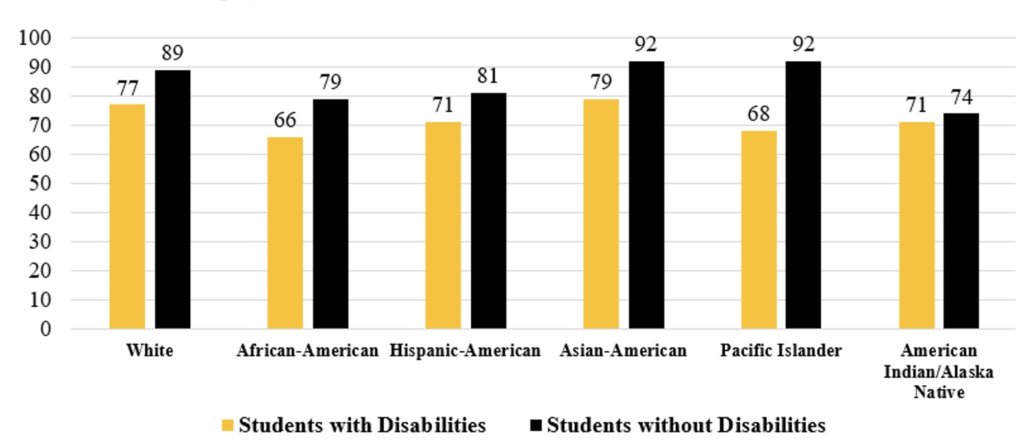
Figure 2: National High School Graduation Rates for Students w/ & w/o Disabilities by Race – Class of 2018.
Source: U.S. Department of Education, Office of Special Education Programs
Focus on Closing the Gaps in WIOA: Few of the policy recommendations made by the Advisory Committee on Increasing Competitive Integrated Employment for Individuals with Disabilities were implemented in the past four years. As such, Congress and the new Administration would do well to consider the Committee’s hard work and how many of its ideas still apply. Additionally, back in 2016, RespectAbility undertook an extensive policy project to review and provide critical feedback on all 50-state workforce plans as required by WIOA. Our comments remain a crucial resource for all policymakers.
Look at Expanding Access to Entrepreneurship as a Workforce Solution: In the pre-pandemic era, job seekers with disabilities were already turning to self-employment in far higher numbers than their non-disabled peers. For many, they did so because being your own boss and owning a small business served as an end-run around the barriers to employment that hold back far too many people with disabilities. In looking at the issue of self-employment and promoting entrepreneurship among people with disabilities, special attention should be directed to the equity issues of access to capital and systemic racism. Several disability organizations have been advocating for the inclusion of people with disabilities as a specific category under the rules of the Community Reinvestment Act (CRA) and to advance racial diversity in the entrepreneurship space. Now it the appropriate time to begin digging deep into that work as an equitable workforce strategy.
Fight Stigmas and Low Expectations That Limit People with Disabilities: Studies show that people with disabilities are seen as warm, but not competent. It is vital to dramatically shift public opinion so that people with disabilities are viewed and valued for what they can do and as equal human beings. This will take shifts in news and entertainment media, education and more. It will also take a sophisticated communications effort.
Focus on Encouraging Disability Owned Businesses and Learning from Iowa Vocational Rehabilitation: Iowa’s Vocational Rehabilitation agency has embraced the current crisis by adopting a range of new virtual strategies, approaches, and procedures for providing high quality workforce service even amid a virtual pandemic. Some of those innovative approaches, have major implications for the future of VR. Iowa quickly invested in the technological infrastructure to provide virtual services statewide, adopted a cohort-based model for fostering social connections among VR clients on Zoom and tested other emerging practices throughout 2020. Many other states could learn from the innovations and ideas tested by Iowa and Iowans with disabilities. Iowa VR has embraced entrepreneurship and self-employment as one of the key virtual services provided to the youth with disabilities that they serve. This is a topic that merits deeper attention as the nation looks for innovative solutions to the challenge of building back better.
Leverage Community College Resources to Improve Employment Outcomes for Students with Disabilities: Community colleges are crucial pieces of the nation’s workforce development infrastructure and in many states, community colleges help direct the investment of WIOA dollars in programs or agencies. State and local Workforce Investment Boards can build sector partnerships that leverage community colleges and other education and training providers to develop career pathways that align workforce supply and demand. WIOA emphasizes the value of recognized postsecondary credentials, and the attention given to career pathways in the act provides a way for community colleges to contribute to the growth of skilled and credentialed workers in their local areas. Community colleges in California received state funding for Disabled Student Programs and Services (DSPS) to assist in providing support services and educational accommodations to students with disabilities so they can have full and equitable access to the community college experience. Part of the community college experience can include job training and readiness. The Rehabilitation Act of 1973 (Act), as amended by WIOA emphasizes the provision of services to students and youth with disabilities to ensure they have opportunities to receive the training and other services necessary to achieve competitive integrated employment. It also expand the population of students with disabilities who may receive services and the kinds of services that the VR agencies may provide to youth and students with disabilities who are transitioning from school to postsecondary education and employment. Making the connection /partnership with Disables Student Programs across every state with WIOA Eligible Training Provider programs at community colleges creates a pipeline of trained /certified workers with disabilities ready for the local competitive integrated job market.
Implement Best Practices: Look to the collected best practices previously documented by critical organizations such the National Governors Association (NGA) Better Bottom Line initiative and the Council of State Governments (CSG): Work Matters A Framework for States on Workforce Development for People with Disabilities. Likewise, look at the 2018 study completed by Accenture and the recently released report from Mercer and Global Disability Inclusion.
As an organization that advocates on behalf of job seekers with disabilities and their families, we believe that collecting the best ideas, emerging practices and innovative policies is critical to ensuring that American with and without disabilities have equal access to good jobs. Without such ideas communities and policymakers cannot direct appropriate resources to the places that need them most, particularly in the wake of the COVID-19 pandemic. If you have any questions or would like to discuss these matters further, our team stands ready to help, however we can. Thank you.
Sincerely,
Jennifer Laszlo Mizrahi
President, RespectAbility
Philip Kahn-Pauli
Policy and Practices Director, RespectAbility
